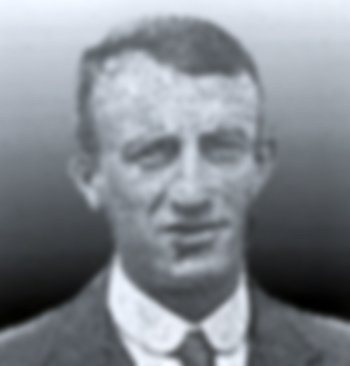St Werburgh's Roman Catholic Parish, Chester

Matthew Clayson
Australian Munitions Worker 22
Died: 01-12-1916 age 29
Matthew was born in Bradford, Manchester, England in 1887. He was the son of Matthew and Mary Ann Clayson nee Ward. The couple had been married in Prestwich, Lancashire in 1884 and the family lived at 274 Mill Street, Bradford. Matthew had an elder sister, Edith, and a younger sister, Annie.
By 1901 the family had moved to 110 Gorton Lane, Manchester. Edith was a milliner and Matthew, age 14, was a trainee iron turner. Annie was still at school.
In the 1911 census the family still lives in Gorton but Matthew Snr is living in an adjacent house and Mary Ann Clayson is listed as head of the household. Matthew Snr died later that year. By now Matthew Jnr was 24 years of age and was listed as an engineering fitter and gunmaker. He would have been a skilled worker as he had trained at Manchester Technical School, the fore-runner of what was to evolve much later into University of Manchester Institute of Science and Technology. His apprenticeship had been served with Sir W.G. Armstrong, Whitworth &Co. Ltd, the famous armaments manufacturer.
After his father's death Matthew decided to emigrate to Australia. He left London on 10 May 1912, aboard the Ophir of the Orient Line, with Sydney listed as his destination. He prospered in his work and the following year his mother, two sisters and his fiancée Jane McCormack joined him in Australia. Matthew and Jane were married shortly after her arrival and later two daughters were born to them. They lived in the pleasant Sydney suburb of Waverley.
Nevertheless, after war broke out Matthew returned to this country as one of the 6,000 Australian Munitions Workers who served here during the Great War. As his number denotes, he was one of the first Australians to volunteer for this work, on 30 August 1916. The voyage to Britain was uneventful, though when his ship docked in Capetown, part way through the journey, Matthew seemed to take a cold. During the journey he also struck up a friendship with fellow Australian Alfred Chambers. Their boat arrived at Tilbury Docks in London on 10 November 1916 and the two made the journey to Chester on 20 November 1916 where both were to be employed at H.M. Munitions in Shotton, starting on 22 November. Whilst here they lodged with Mrs Atkinson at 23 Cherry Road, Boughton, and Matthew joined the congregation at St Werburgh's. Matthew had still not quite managed to shake off the cold he had contracted during the voyage.
The Australians travelled by train on a daily basis, from Chester, to work at Queensferry. After only about three shifts Matthew became too ill to work. Chambers sent for Fr Hayes, who arranged for two sisters from the Chester Convent to nurse him at home, as the rapid deterioration in his medical condition meant that Matthew could not be transferred to hospital. They were joined in their bedside vigil by Matthew's sister-in-law, Mrs A. S. Carlon, from Manchester. Sadly Matthew died from pneumonia on 1 December 1916. He was buried from St Werburgh's, in Overleigh Cemetery, on 4 December 1916, Grave 167. It is understood that Matthew's wife and two children may have returned to this country after the end of the war.
Matthew's obituary was published in St Werburgh's Parish Magazine of January 1917, where mention is made of his having returned from Australia to serve his country. As he did not leave Britain during the course of the war, Matthew was not entitled to receive any British campaign medals. However, as an Australian, he had gone abroad to serve his country. His grave in Overleigh Cemetery is therefore marked by and remains under the care of the Australian Section of the Commonwealth War Graves Commission.
